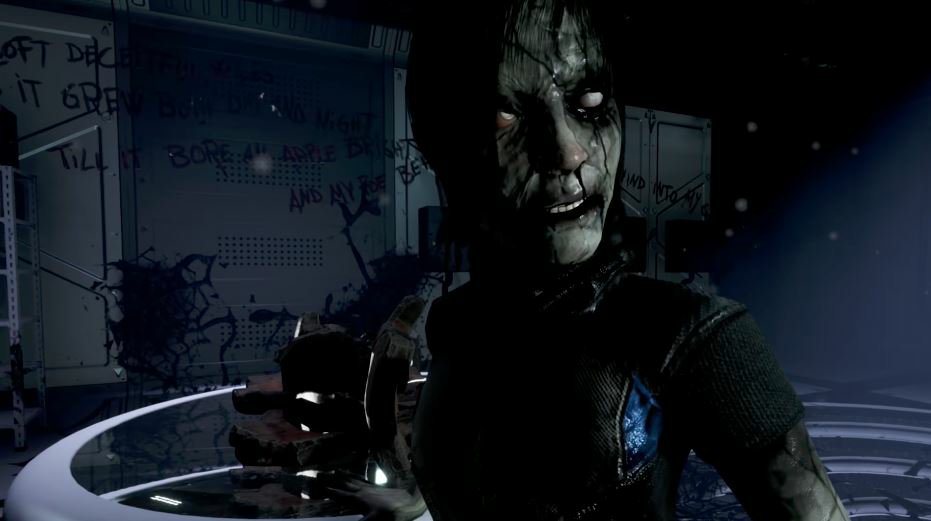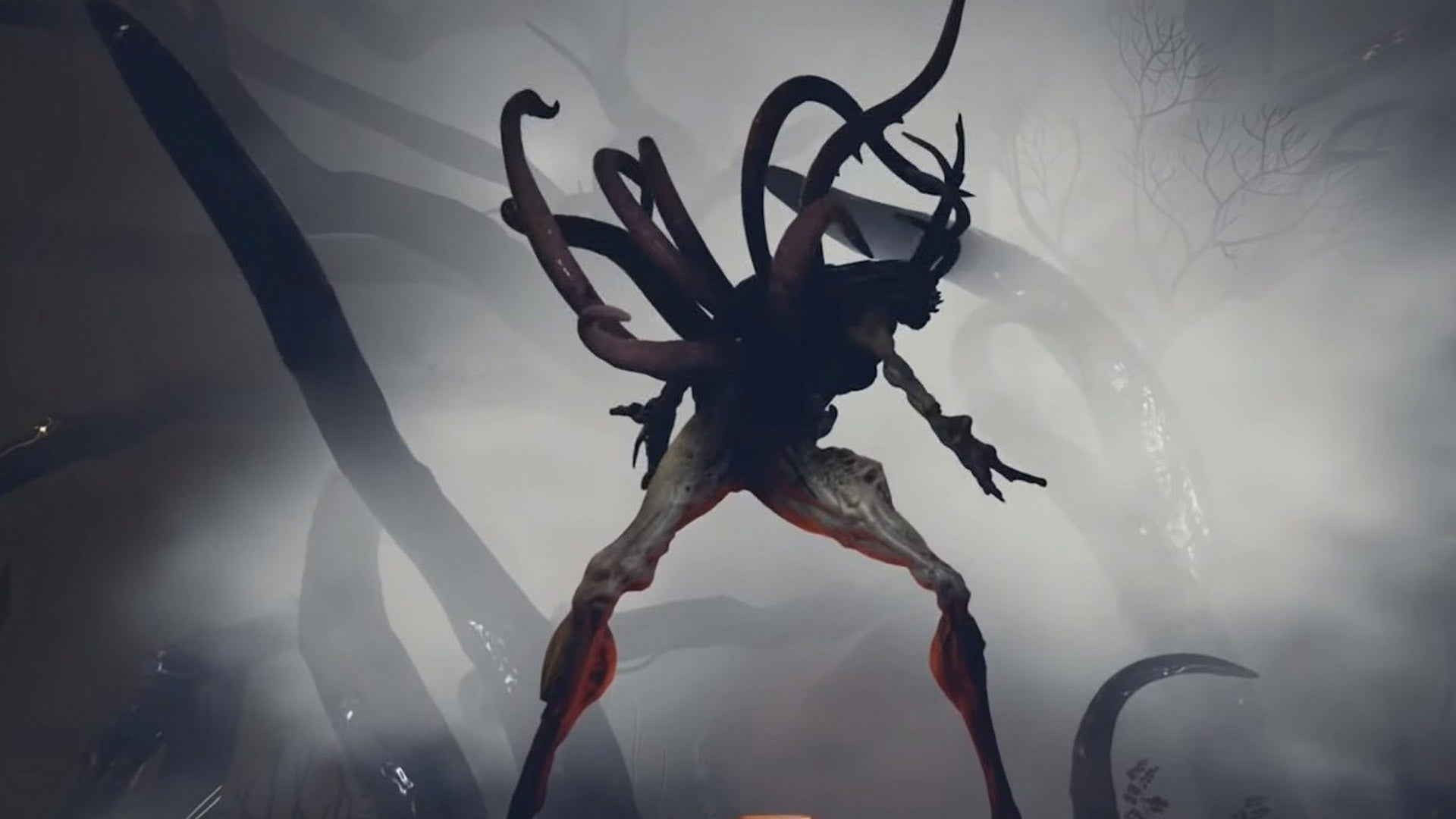First person, claustrophobic horror… in space! A strong start offers real terror, but will its cribbing from other stories lose the horror and enter realms of cliche? The Finger Guns Review:
Horror games and I have always had a fractal relationship. There are some that I can handle, and some that cripple me with a constant threat of looming dread that I can’t continue. Weirdly enough, Alien: Isolation is one of my favourite games in recent years, but I can’t bring myself to finish or even play much of the Outlast games.
Is it something about space that I am able to handle? Is it the countless times that I’ve watched the only two good Alien films, or Event Horizon, or Pandorum, that have made me more accustomed to a space horror setting? Who knows.
So when Moons of Madness was [digitally] dropped off at Finger Guns HQ, my interest was piqued. A first person, narrative horror adventure with an underlying Lovecraftian vibe going on? Sign me up.
Whilst it soon becomes apparent that Rock Pocket have done a sterling attempt, it soon becomes apparent that they’re riffing from other song sheets. Instead of one core story, MoM tries several, which leave it a bit of a jumbled mess about halfway through.
Does that ruin the experience as a whole, though? Well, join me if you dare, and we’ll find out…
There will be story spoilers ahead. If you want to go in blind, skip to the score to see if this is a recommendation or not.

In Space, No One Can See You Roll Your Eyes
Our story begins in medias res, with our protagonist Shane Newehart (who sounds like a knock off Chris Pratt) waking up to a desolate and overrun-with-weird-stuff space station. As some of you may be guessing, dark and spooky normally leads to a jump scare at the end before we wake up proper. I’m happy to report that… exactly that happens.
The cynic that is me instantly thought, “Really? This is how we’re setting the tone? Jump scares from the off, how droll”. But then, it occurred to me that maybe the game was doing it to desensitise me. lull me into thinking that it’ll be like that at all the obvious moments, then catch me unawares. And that is exactly what it did. Well played, game.
False start over, the game begins with our man waking up on his relatively ordinary Martian space station (as in, they’ve build a space station on Mars, not a space station of Martian construct), to find none of his crew about. But not to worry, your colleague Declan briefs you on some tasks that need doing over the radio. As you make yourself a copy aboard the Orochi space station, you’re instructed to turn the power on, which involves going out to the solar power array.
This is where the bulk of Moons’ gameplay is laid out before you: it’s not so much an action horror title (in space!) that you’d think would follow in Isolation’s shoes, but more a walking simulator… in space! (Sorry).
So much of MoM’s gameplay is just following floor checkpoints, using your Swiss Army wristband to solve most arbitrary puzzles and generally bimble onto the next sequence of events.
It’s not a bad mechanic, per se. It just dilutes what could have been a decent interactive horror experience into “follow the checkpoints and solve some basic puzzles to break the monotony of walking”. Quite early on, for example, you pick up a crowbar, pretty much identical to the one another famous, bespectacled scientist once wielded. To me, that said there’d be some kind of combat mechanic, or at least a self defense one, to break up the flow.
Sadly, it’s used for it’s intended purpose of jimmying doors open, not a tool to bludgeon nasties with. Shame.

Things That Slowly Go Bump in the Dark
Having restored power to the base, our chatty Martian is sent to investigate the greenhouse and figure out why it’s flooded. As it transpires, the weird black goopy tentacles from Shane’s dream are a real thing. These are what’s blocking the normal flow of water about the base, and we need to sort this mess out.
After a fairly decent math-and-colour-association puzzle, we just need to shut the necessary valve off… which presents the first real challenge of the game thus far: that nasty looking fella above. Looking like something straight out of a Lovecraftian cheese dream, I didn’t feel inclined to see if it wanted to smell what toothpaste I’d used, so I legged it. Which would have been terrifying if it was hot on my heels, but it really wasn’t. Sure, if I stood still too long then yes, it would have had me. But unless you’re really bad at following obvious blocked/not-blocked visual clues, you’ll have no trouble with this. Heck, at one point the creature froze at the end of a corridor behind me, as if to say, “Go on, I’ll give ya a head start”. I’m sure it wasn’t meant to do that, but it took the fear away from me and lost all seriousness in the threat.
And then the game went a bit weird…
You know those Lovecraftian references I’ve been making, instead of just a standard “monsters from another dimension” kind of affair? Well, this is why: having eluded the beast, Shane is suddenly transported to some mystery realm. Half cave, half ruined household corridor, it’s littered with orbs on pedestals that need a certain amount lit before progression. Gone was the space station, instead replaced with whatever this was.
Even weirder, Shane has a scar on his hand that looks like the overlapping silhouette of two moons (think: Venn diagram). Apropos of nothing, focusing on an orb causes Shane’s scar to glow and light said orb. It’s never explained how he has the scar, you just have to accept that he has it. There’s a looming threat of some nasty tentacle thing that follows you, but can be repelled by, and this’ll make you laugh, looking at it. An evil-looking creature of nightmares is pushed back by a staredown. It’s laudable… until a surprise jump scare a few minutes later knocked me off of my high horse. Alright game, one all.

On What Basis Did I Need to Know This?
If you’ve been reading this review intently up to this point, and why wouldn’t you, you’d be forgiven for thinking that this is the main concept of the game. Spooky, cosmic horror of the occult kind wrapped up in a story involving the powers in the two moons of Mars, Phobos and Deimos. Of course, you only gleam this information from text items lying around, no one flat out tells you this. That is, until you meet the witch that everyone jokes about the base. Alright, she talks in tongues and cryptic hints, but it gives you some inkling as to where this is heading. It’s only taken a third of the game to get rolling, but fine, we all love a bit of pacing.
Except… about midway through chapter two, Moons of Madness sidelines the mainline, occult stuff and drifts off into a narrative about one of the scientists being a double agent. All the tropes are there: sinister corporate overlords, the hidden nature of the mission (the public are told it’s a mission to Antartica), even a frankly weak revelation that the crew either are or have clones of themselves in a secret base under the main habitat.
It’s not helped by having a radically tonal shift in gameplay either, involving a game of hide and seek against security robots, camera hacking minig-game and all. It harkens back to the Working Joe’s from Alien: Isolation, but without the looming menace. What doesn’t help is that whilst being grabbed by one isn’t an instant death, the stun you take gives you no reprieve to flee, so you get walloped again, causing you to die.
Jarring subplot aside, there is a motive for being there: you uncover that the scientist behind the previously mentioned greenhouse infestation is the double agent of sorts, and there’s another level of the base to explore. This brings our story back on track, finally, as we get back to finding out what’s going on, who this witch is, and why we’re the key component in a grander scheme involving the power of the moons.

That’s No Moon…
I won’t continue to spoil the story, as there has to be some mystery left. Instead, let’s breakdown the gameplay of this space-walking simulator. As I’ve said, there’s no real combat mechanic to speak of, save one boss “fight”, so what is there to do besides tilting the left stick forward and pressing X on things?
Well, credit goes to Rock Pocket for actually attempting to recreate the strictness of checking doorways and airlocks in the vacuum of space. Whether you’re leaving or entering the base, or one of the buggies dotted about, you have to follow the procedure to the button prompt. When you enter an airlock, you have to remember to put a helmet on, pressurise the room to the relevant atmosphere and then open the door. It may be repetitive, but it adds to that immersion of y’know, actually being in space. I’m not ashamed to admit that I took my helmet off once before re-pressurising the airlock. I panicked, I died, I laughed at my own stupidity.
Granted, some of the puzzles are pretty obvious. There’s a part later on which has you pick up some patterned cubes, that you need to rotate and slot in correctly to progress. What possible clues are there to aid this, or even drop you a hint? Ah, just the answer quite literally in front of you above the cube recessions. But there are some that involve a bit of ingenuity, even if it’s not up to the level of The Witness.
But for all my criticisms (y’know, being a critic and all), I actually really enjoyed Moons of Madness. It’s not a particularly long game, with the more savvy of you getting about five to seven hours out of it. It doesn’t have the complexity of Alien: Isolation, or even the elements it cribs from Dead Space (which will make sense when you play it). It doesn’t have the horror chops of Outlast or SOMA, either, and that’s not me downplaying it because I’m a big brave boy. It’s also easy enough to getting the platinum trophy/full achievement set in one playthrough, although one sage bit of advice: dumb as it sounds, walk into an obvious electrified puddle. You’ll thank me, as I had to backtrack.
It may not have the originality or suspense of larger budgeted games, but it’s not aspiring to. Instead, go in with the mindset of it being a walking simulator with horror elements than a “horror game”, and you’re good.

It won’t revolutionise either the horror or walking simulator genre, but it’s a strong entry nonetheless.
Moons of Madness is available now on PS4 (reviewed), Xbox One and PC.
Developer: Rock Pocket Games
Publisher: Funcom
Disclaimer: In order to complete this review, we were provided with a promotional code from the publisher. For our full review policy, please go here.
If you enjoyed this article or any more of our content, please consider our Patreon.
